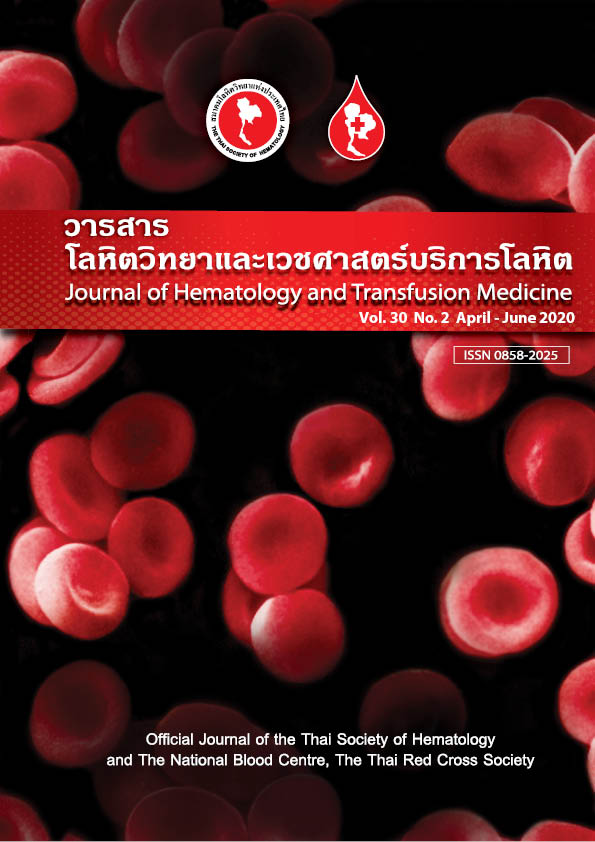โรคมะเร็งต่อมน้ำเหลืองฮอดจ์กินที่มาด้วยกลุ่มอาการเนโฟรติกและนิ้วปุ้ม
Keywords:
Hodgkin lymphoma, Hypertrophic osteoarthropathy, Nephrotic syndromeAbstract
The case report of a 12-year-old girl presenting swollen legs and eyelids for one-month together with
bilateral knee pain intermittent fever and drenched night sweating. Physical examination revealed decreased
breath sound with dullness on percussion of the right chest with clubbing of fingers on both hands and feet. The laboratory investigation showed nephrotic-range proteinuria. Chest radiograph confirmed large anterior mediastinal mass sized 8x11 cm. The pathological study confirmed the diagnosis of classic Hodgkin lymphoma stage IIB + bulk mass nodular sclerosis subtype. The treatment was started with chemotherapy according to the Thai Pediatric Oncology Group protocol for intermediate-risk Hodgkin lymphoma resulting in dramatic response. The Nephrotic syndrome is a rare condition associated with presenting symptoms of Hodgkin lymphoma. Pathogenesis may cause abnormal T-cell function and hypercytokine state. Chemotherapy treatment for Hodgkin lymphoma induced remission of nephrotic syndrome in our patient and most of the case reports. However, the relapse rate is high among this group. Another associated finding in this case, was hypertrophic osteoarthropathy (HOA), consisting of clubbing of fingers, periosteal new bone formation, and arthritis. The pathogenesis is due to increased platelet-derived growth factor (PDGF) and vascular endothelial growth factor (VEGF) causing abnormal pulmonary vasculature bypass and inducing microthrombi accumulation at the distal phalanges. Again, HOA showed improvement after the patient was treated with chemotherapy for Hodgkin lymphoma.
Downloads
References
2. Audard V, Larousserie F, Grimbert P, Abtahi M, Sotto JJ, Delmer A, et al. Minimal change nephrotic syndrome and classical Hodgkin's lymphoma: report of 21 cases and review of the literature. Kidney Int. 2006;69:2251-60.
3. Van Den Berg JG, Aten J, Chand MA, Claessen N, Dijkink L, Wijdenes J, et al. Interleukin-4 and interleukin-13 act on glomerular visceral epithelial cells. J Am Soc Nephrol. 2000;11:413-22.
4. Li Q, Verma IM. NF-kappaB regulation in the immune system. Nat Rev Immunol. 2002;2:725-34.
5. Utine EG, Yalcin B, Karnak I, Kale G, Yalcin E, Dogru D, et al. Childhood intrathoracic Hodgkin lymphoma with hypertrophic pulmonary osteoarthropathy: a case report and review of the literature. Eur J Pediatr. 2008;167:419-23.
Downloads
Published
Issue
Section
License
Copyright (c) 2020 Journal of Hematology and Transfusion Medicine

This work is licensed under a Creative Commons Attribution-NonCommercial-NoDerivatives 4.0 International License.



